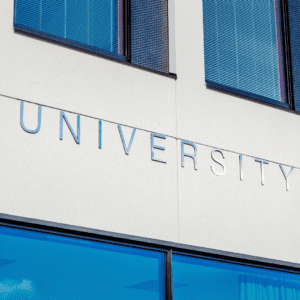On November 26, the Government of Ontario announced a new performance-based funding model for public colleges and universities that will begin in 2022.
“Our government believes in making institutions accountable for student success,” said Minister of Colleges and Universities Ross Romano. “That’s why we are making sure Ontario’s [public] postsecondary institutions have a clear mandate that is focused on meeting the needs of students and equipping them to succeed in rewarding careers.”
The government’s ten performance metrics will seek to tie a portion of government funding to student outcomes in order to help them better obtain the education and skills needed for in-demand jobs.
Performance metrics
Skills and job outcomes
Economic and community impact
This new model flirts with embedding more career development in postsecondary education delivery by providing incentives for careers tools like experiential learning and skills development. But it falls to institutions to use the latitude afforded them by these agreements to support expanded and more integrated career development. This means providing career services throughout and within the normal curriculum rather than as an adjacent support. Using CERIC’s Guiding Principles of Career Development, let’s take a look at this new policy through a careers lens.
According to CERIC’s Guiding Principles, career development:
Connecting education, jobs, and careers
 The performance metrics in Ontario’s new model overwhelmingly focus on skills and employment, with some recognition of the influence of community and mentors on career outcomes. This is an important part of career development. However, measuring only skills and employment outcomes at graduation may drive institutions to implement programs that do not lead to long term career success for students.
The performance metrics in Ontario’s new model overwhelmingly focus on skills and employment, with some recognition of the influence of community and mentors on career outcomes. This is an important part of career development. However, measuring only skills and employment outcomes at graduation may drive institutions to implement programs that do not lead to long term career success for students.
For instance, a school that systematically encourages students to participate in STEM-based co-op programs will meet the metrics set by the government, with students prepared to find well-paid, skilled employment in a related field. But the very first principle of career development holds that it is a lifelong process. If students are pushed towards outcomes that don’t take into account their career interests and goals, they are less likely to thrive in those outcomes. This includes both their happiness and mental health, as well as the associated economic outcome.
To put it another way, would you rather be operated on by a surgeon who is passionate about their practice or one who is there because the school they attended wanted to maximize funding? This example surfaces the concern we should have for all misalignments of interests and education. A well-aligned workforce is a happier, healthier, more competent, and more productive workforce.
Moreover, job attainment skills are not necessarily the same as career development skills. The former focuses on writing resumés and cover letters and excelling in interviews. The latter equips individuals to navigate the workforce in the context of their drives, capabilities, and constraints—both internal (financial, cultural, health) and external (labour market, technology).
This ties into another principle of career development: it is self-directed and non-linear.
Non-linear careers are the norm in today’s world. Unless you’ve worked in the same field, advancing through the same hierarchy your entire life, your career is non-linear. You might have completed a degree in psychology and worked in marketing for a large company after graduation. A few years later, you might have started your own small business before becoming a college instructor. Now, twenty years into your career, perhaps you are an operations consultant to industry.
It is especially important that careers be self-directed, as no system can adequately adjust for the infinite variables that make up individuals or the shifting nature of work and jobs. Only the student can ultimately be responsible for their career, and schools need to prepare and empower them to make informed career decisions. If “greater student success” is the objective, the process must be driven by students themselves.
What institutions can do
 Starting with experiential learning (one of the model’s ten metrics), schools can embed principles of career development into work-integrated learning opportunities. Co-ops, internships, and summer employment are currently measured by the number of students participating. Time spent in work settings is valuable but on its own does not result in career competence. It becomes career-advancing when opportunities for reflection, evaluation, and integration also occur. Work-integrated learning done well ensures learning from the classroom is integrated into practical activities and learning from workplace settings is integrated into future learning and career thinking.
Starting with experiential learning (one of the model’s ten metrics), schools can embed principles of career development into work-integrated learning opportunities. Co-ops, internships, and summer employment are currently measured by the number of students participating. Time spent in work settings is valuable but on its own does not result in career competence. It becomes career-advancing when opportunities for reflection, evaluation, and integration also occur. Work-integrated learning done well ensures learning from the classroom is integrated into practical activities and learning from workplace settings is integrated into future learning and career thinking.
Three of the remaining seven metrics relate to graduate success, including employment in a related field and earnings. Providing integrated career services can help students find employment after graduation, which will inevitably increase these statistics. Integrated services embed career exploration and ownership skills throughout educational programs, not just as graduation approaches. It is important to leave behind the outdated model of students visiting a career centre only when it is time to look for a job. A focus on career reflection and choices throughout educational programs ensures graduates develop not just job-ready skills, but also career navigation tools to last a lifetime.
Career ownership builds self-confidence and contributes to student well-being, and a career mindset provides the tools and perspectives that students need to weather setbacks and disappointments. Both of these also allow space for students to turn back and turn aside whenever they please.
Perhaps most interesting for its potential is the “economic impact” metric. This criterion was left purposefully open to interpretation so that schools can fulfill it in innovative ways. One approach has been to measure this impact by the number of start-ups receiving services, aid, or resources from the institution or incubators and accelerators at the school. York University and the University of Toronto both subscribe to some form of this calculation. The advantage in this is that it encourages schools to fund their graduates’ dream projects, small businesses, and non-profit organizations. This can increase innovation and develop an entrepreneurial spirit among students.
Empowering students
It’s not easy making the transition from school to work, and everyone benefits when our students succeed.
Integrating career development into postsecondary education and related policy can empower students to make the most of their interests and abilities, equipping them to make informed career choices. As part of the new funding model, institutions can do this by using looser metrics, such as economic impact, to encourage entrepreneurship and innovation, and by providing holistic, embedded career services. In these ways, schools can meet both the needs of their students and their funding requirements.
With contributions from Lisa Taylor, Sage Duquette, and Taryn Blanchard.

